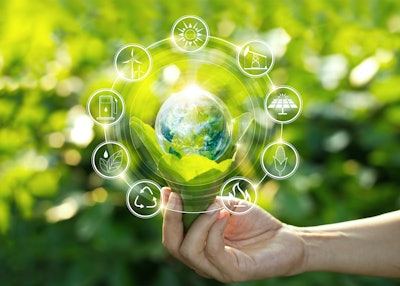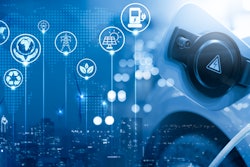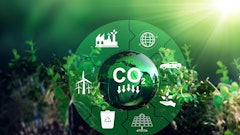
Pursuing sustainable practices is no longer a luxury; it’s a necessity.
For example, Carbon dioxide levels, over the span of one year, from 2020-2021, grew more than the average annual growth rate over the past decade. This is only one of many damning statistics with others including land use and biodiversity loss. Therefore, decreasing carbon emissions and improving the sustainability of global supply chains is imperative.
ESG and EU Taxonomy
To begin, ESG and EU Taxonomy are two new instruments that European governments have begun using and will have a direct effect on corporate finances.
For example, under this new system companies are now expected to report on the three pillars of ESG, those being environmental, social and governance. As investors are incorporating ESG elements in their investment decision-making process, companies with good ESG ratings are likely to attract more investment. Therefore, companies with better ESG ratings are likely, all else being equal, to achieve a higher valuation of their equity than other companies in their peer group.
On the other hand, the EU Taxonomy system is meant to steer economic development in a sustainable direction. This system relies on regulations, classifications, and a list of environmentally sustainable economic activities that companies must follow. Compliance with the taxonomy will affect companies’ ability to obtain borrowed capital and will give these companies an advantage as they continue to scale their businesses.
Net Zero
In order to achieve net zero emissions, companies need to gain a quick and clear understanding of how they can cut down on carbon emissions. Most companies already have identified their main contributors. Still, the challenge for upcoming years will be identifying where exactly in the supply chain the carbon emissions come from and, implementing strategies for reducing the carbon emissions of these processes.
Getting companies to recognize net zero emissions as an important part of their business can be difficult due to the cost and coordination required to achieve it. However, the basis of any sustainable transformation, whether achieving net zero emissions or decreasing emissions in general, is understanding the principles of sustainable business models and their consequences.
Scope 3 reporting
Although Scope 3 reporting is clearly connected to Net Zero, it is an incredibly significant development because it forces companies to report on their carbon emissions, exposing them to the public, which can trickle down to affect the opinions of consumers toward those companies and eventually impact the profitability of their products. Even though Scope 3 reporting can be tricky, it is an important piece of work that enables a basic understanding of your products and the upstream and downstream processes.
This will provide an advantage when the planned eco-design directive gets realized in the next few years. The proposal for the update of the European Union's Ecodesign Directive (Directive 2009/125/EC), published on March 30, 2022, is the cornerstone of the Commission’s approach to more environmentally sustainable and circular products and will also pressure companies to work on the sustainability of their product portfolio.
Technologies such as data analysis, artificial intelligence, and advanced modeling methods are key tools to help companies achieve their sustainability goals.
Carbon crediting credibility
The voluntary carbon credit system is a point of division for many ecologists who view it as a way for companies to avoid decarbonization. Using this system, companies can exchange a carbon credit, a certificate that allows a business to produce a fixed amount of emissions, for monetary gain.
Naturally, companies have tried to take advantage of this system. One such company is South Pole which, through their reporting, it was discovered that their carbon trade programs increased emissions rather than decreasing them. The South Pole controversy has led to a new discussion on how and if carbon credits should be allowed as a way for companies to decarbonize. Therefore, as a company – to avoid a discussion about greenwashing – carbon crediting should be applied with care and preferably only be used as an instrument in a transition phase.
Biodiversity
Climate change and biodiversity are two topics that go hand in hand. Increasing carbon emissions have resulted in a steady increase in the global temperature over the past 100 years. Caused by substantial influences from human activities, dominantly deforestation, monoculture farming, and fragmentation of habitats through infrastructural projects, ecosystems around the world have begun to experience a decrease in overall biodiversity.
Many aspects of a company's supply chain can lead to increased climate change and decreasing biodiversity. The consequences of shifts in this delicate balance can be felt around the world. For example, large-scale deforestation, like in the Amazon rainforest, will influence climate patterns as the world loses its cooling effect.
As Brazilian scientist Antonio Nobre explains, the rainforest is not only home to an incredible diversity of species, but it also has a critical cooling effect on the planet because its trees channel heat high into the atmosphere. In addition, forests absorb and store carbon dioxide (CO2) from the atmosphere—CO2 that is released back into the atmosphere when trees are cut and burned.
Nobre warns that “If deforestation continues at current levels, we are headed for disaster. The Amazon region could become drier and drier, unable to support healthy habitats or croplands.“
Stable ecosystems are important for our ability to adapt to climate change; if this is not given, there will be a feedback effect to climate change. Companies should focus on understanding their effect on biodiversity and mirror it in their sustainability strategy.

















